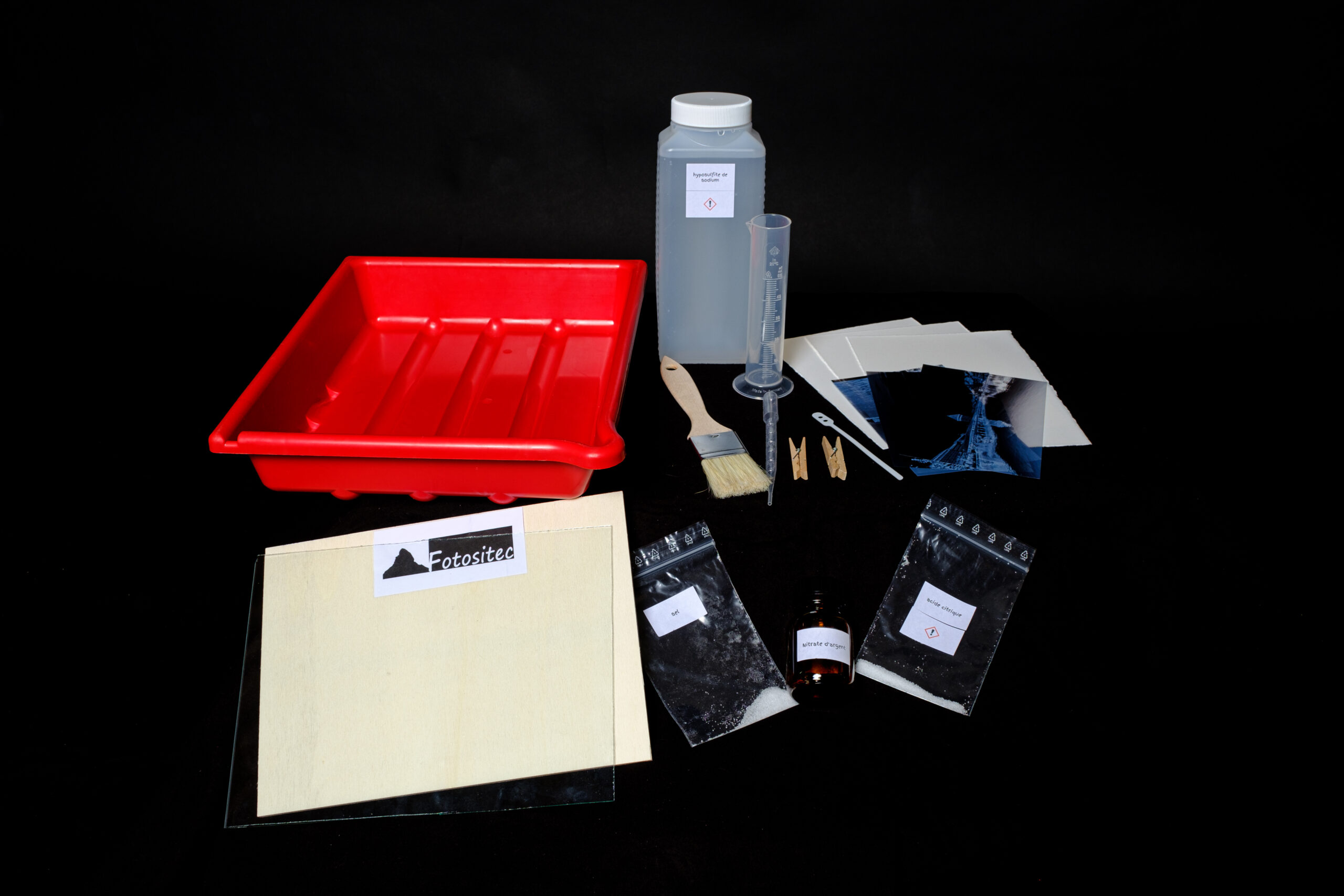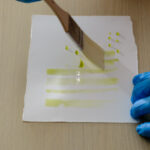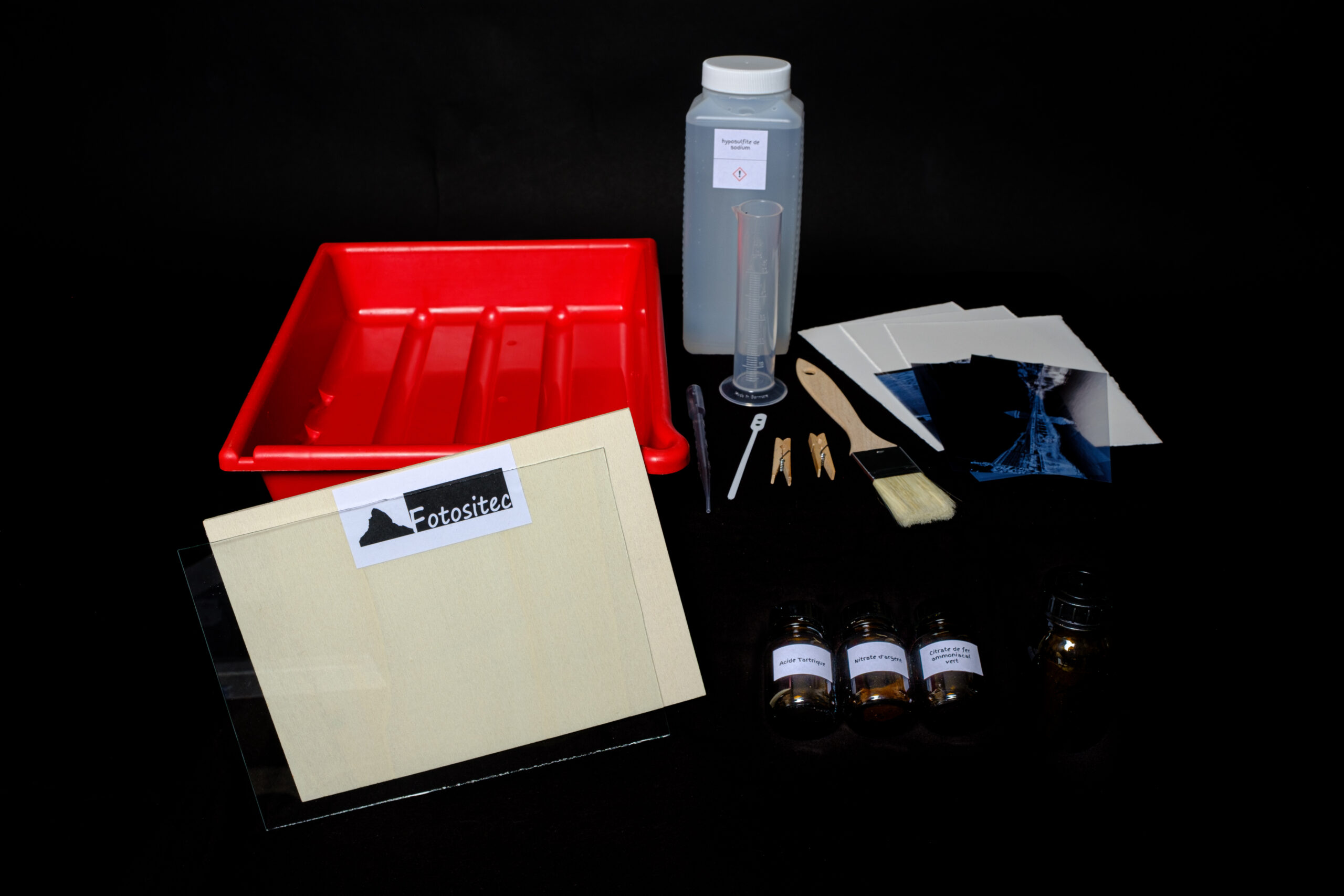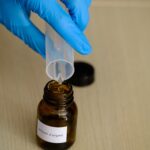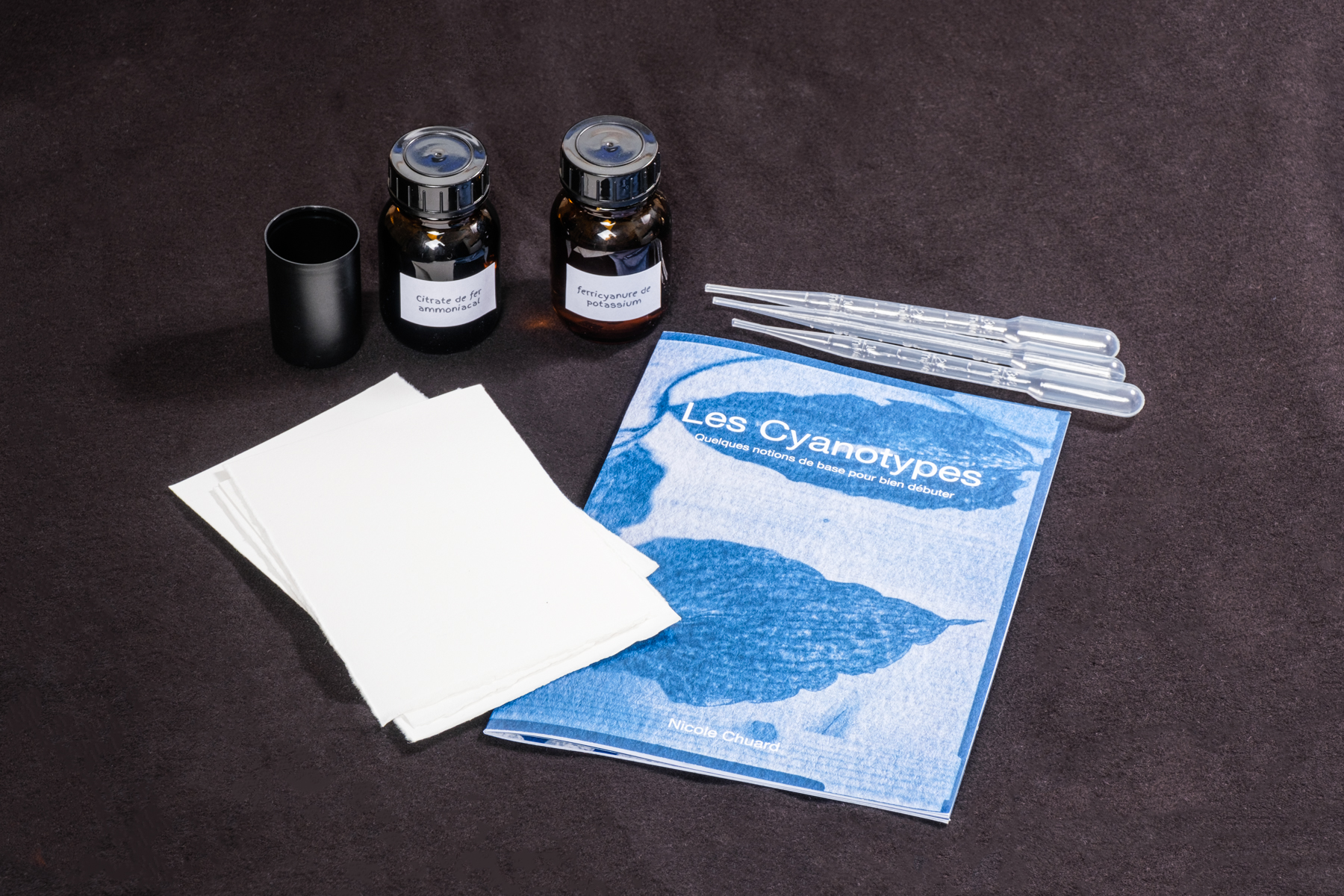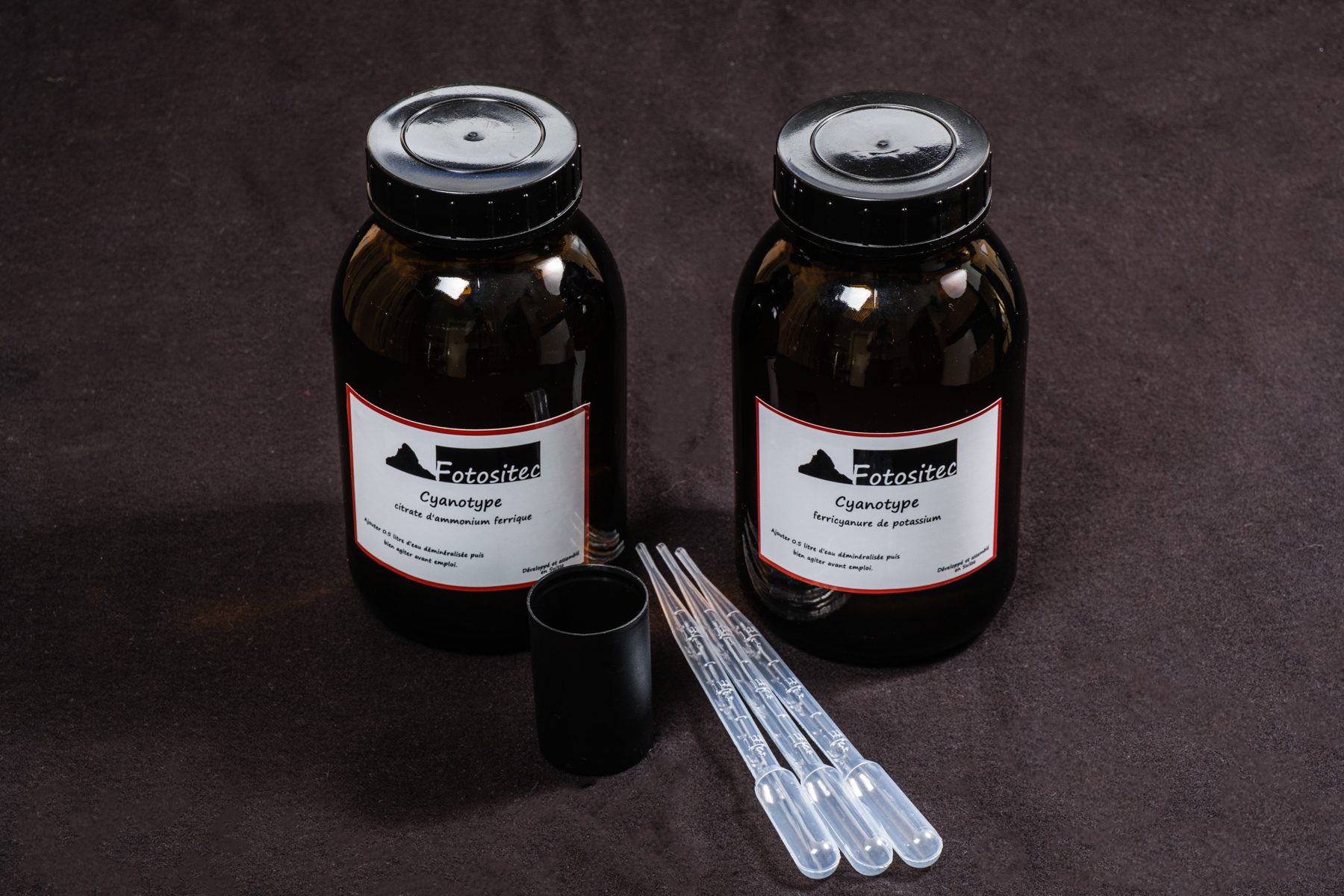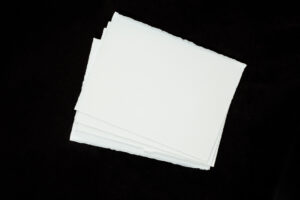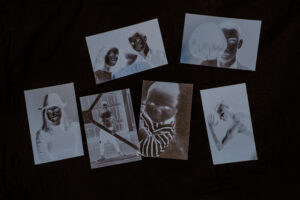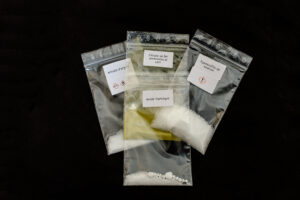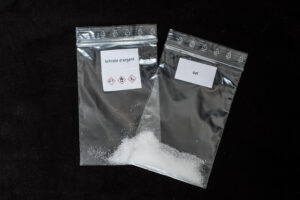Salted paper kit
Salt paper was one of the first photographic papers to be developed. It was widely used between 1839 and 1860, mainly by Henry Fox Talbot. It is relatively simple to produce. It uses silver nitrate as a sensitive agent and salt to increase the sensitivity of the silver nitrate to light.
Our kit contains everything you need to take photos with salt paper:
- 50 ml brown glass bottle
- 50 ml measuring spoon
- Cuvette
- Brush
- 1 litre bottle
- Pipette
- Tweezers
- Silver nitrate
- Citric acid
- Salt
- Sodium hyposulphite
- Paper
- Negative
- Small press frame
- Instructions in French and explanatory video.
All you need is 2 litres of demineralised water, a half-litre measuring cup and some sunshine.
Our kit contains everything you need to take photos using the Van Dyke process:
- 50 ml brown glass bottle
- 150 ml brown glass bottle
- 50 ml measuring cup
- Cuvette
- Brush
- 1 litre bottle
- Pipette
- Tweezers
- Silver nitrate
- Tartaric acid
- Iron citrate Ammoniacal
- Sodium hyposulphite
- Paper
- Negative
- Small press frame
- Instructions for use in French and explanatory video.
All you need is 1 litre of demineralised water and some sunshine.
Van Dyke kit
The Van Dyke process takes its name from the Flemish painter Anton Van Dyck, whose palette of browns is similar. It is a simplified version of the callitype that appeared later towards the end of the 19th century.
It also uses silver nitrate as a light-sensitising element. It produces browner tones than the salted paper print, which tends more towards reddish-brown tones.
Cyanotype kit
The cyanotype is a monochrome photographic process developed in 1842 by the English scientist and astronomer John Frederick William Herschel, producing photographs with beautiful blue tones.
It is the simplest photographic process to produce. It uses only two chemicals: ferric ammonium citrate and potassium ferricyanide, which are not harmful to health.
Our kit contains all the chemistry, paper and containers needed to make 10 cyanotype prints.
What’s more, a booklet by photographer Nicole Chuard is included in the kit. This booklet will explain how to obtain beautiful cyanotypes and tell you more about this process.
Kit contents: two 0.5-litre bottles with chemistry and three pipettes (all you need to do is add demineralised water).
Cyanotype chemistry 2x 0.5 litre
The cyanotype is a monochrome photographic process developed in 1842 by the English scientist and astronomer John Frederick William Herschel, producing photographs with beautiful blue tones.
It is the simplest photographic process to produce. It uses only two chemicals: ferric ammonium citrate and potassium ferricyanide, which are not harmful to health.
